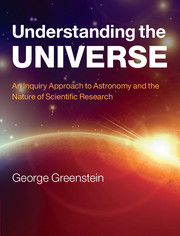Book contents
- Frontmatter
- Contents
- Preface
- Acknowledgments
- Part I Introducing steps to astronomy
- Part II The Solar System
- Part III Introducing stars
- 11 Our Sun
- 12 A census of stars
- 13 The formation of stars and planets
- 14 Stellar structure
- 15 Stellar evolution and death
- Part IV Introducing galaxies and the Universe
- Epilog
- Appendix I The small-angle formula
- Appendix II Exponential notation
- Appendix III The Solar System
- Appendix IV The closest and brightest stars
- Appendix V Physical and astronomical constants
- Appendix VI Conversion factors
- Appendix VII Constellation maps
- Glossary
- Figure Credits
- Index
- Plate section
12 - A census of stars
from Part III - Introducing stars
Published online by Cambridge University Press: 05 February 2013
- Frontmatter
- Contents
- Preface
- Acknowledgments
- Part I Introducing steps to astronomy
- Part II The Solar System
- Part III Introducing stars
- 11 Our Sun
- 12 A census of stars
- 13 The formation of stars and planets
- 14 Stellar structure
- 15 Stellar evolution and death
- Part IV Introducing galaxies and the Universe
- Epilog
- Appendix I The small-angle formula
- Appendix II Exponential notation
- Appendix III The Solar System
- Appendix IV The closest and brightest stars
- Appendix V Physical and astronomical constants
- Appendix VI Conversion factors
- Appendix VII Constellation maps
- Glossary
- Figure Credits
- Index
- Plate section
Summary
In the previous chapter we studied one particular star: the nearest one, our Sun. We now transfer attention to all the others.
To the naked eye, stars look like nothing more than tiny points of light. That's what they look like through a telescope, too. Nothing in their appearance, even through our most powerful of telescopes, tells us much about them. Indeed, just as we saw in our study of the Sun, it is not easy to find out things about the stars. Our first task in this chapter will be to find techniques for answering questions about them – questions like “how far away is that star?” or “how bright is it?”
Our second task will be to use these techniques to conduct a census of stars. Just as pollsters do not interview each and every person in America, so it would be impossible to study each and every star in the sky. Accordingly, much of our time will be spent in developing ways to identify a representative sample of stars with which to conduct our census.
When we finally do so, a remarkable pattern will emerge, a pattern summarized in the so-called “Hertzsprung–Russell diagram.” It will take us two full chapters to reach an understanding of this pattern.
- Type
- Chapter
- Information
- Understanding the UniverseAn Inquiry Approach to Astronomy and the Nature of Scientific Research, pp. 345 - 367Publisher: Cambridge University PressPrint publication year: 2013



